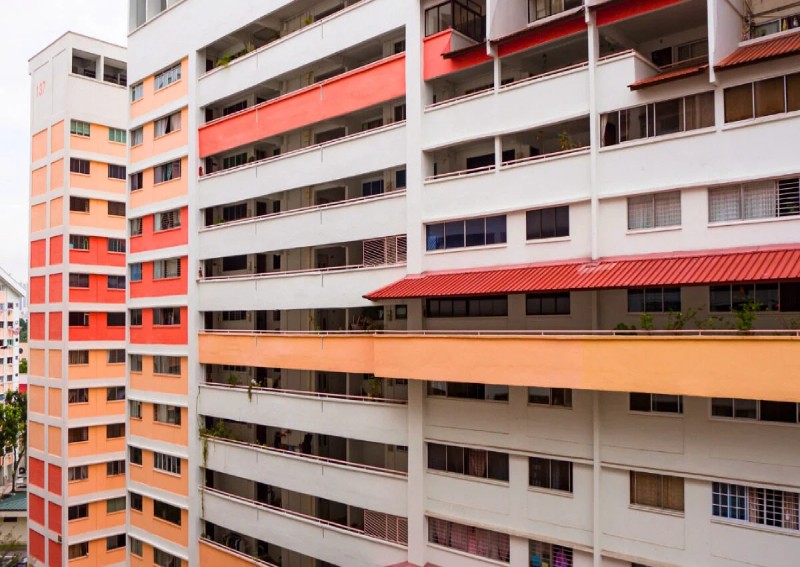Price gap analysis: Are HDB resale and condo prices narrowing?

Over the past four years, a noticeable trend has emerged, with median resale HDB flat prices experiencing steady growth. Surprisingly, these prices have outpaced the growth in both median resale and new private home prices during the years 2020 and 2021.
However, the numbers witnessed in previous years encountered a slowdown in 2022 and 2023. This deceleration can be attributed to increased price resistance and the implementation of cooling measures in September 2022.
These measures included tighter HDB loan restrictions and the introduction of a 15-month wait-out period for private homeowners before purchasing HDB resale flats without housing grants.
A remarkable reversal marked the years 2022 and 2023, as median resale flat prices rebounded from a six-year decline spanning 2014 to 2019. In 2022, there was a 9.2 per cent surge to S$499 psf, followed by a 6.2 per cent rise to $530 psf in 2023.
An intriguing facet emerges when comparing the growth in median resale HDB prices with median resale condo prices. Despite the cooling measures, resale condo prices exhibited a robust increase of 11.1 per cent in 2022 and 10.7 per cent in 2023, surpassing the growth in resale HDB prices.
Some HDB flats even broke records by selling for more than $1,000 per square foot (psf), setting a new standard. This is noteworthy, especially when you consider that new condo prices in the suburbs went past the $2,000 psf mark.
In fact, December 2023 witnessed history as a 1,001 sqft four-room HDB flat in Cantonment Road was sold for a record-breaking $1,409 psf.
Several factors fuelled the rebound in resale flat prices. Increased HDB resale transactions, a shift from buying Build-To-Order (BTO) flats to the resale market, and condo owners downgrading to resale flats played pivotal roles.
Pre-pandemic policies, such as allowing buyers to use more Central Provident Fund (CPF) for resale flat purchases, further contributed to the upward trajectory.
Looking ahead, the government's efforts to increase new BTO supply and launch more HDB flats with shorter waiting times may influence a potential slowdown in the growth of median resale flat prices.
Anticipations for changes in transaction patterns are high in early 2024, especially when the first batch of private home downgraders completes their 15-month wait-out period. This period might witness shifts in dynamics, offering valuable insights into the evolving preferences of homebuyers.

In a parallel exploration of the real estate landscape, let's take a look at pricing trends between new and resale condos. Notably, the once-widening price difference is showing signs of narrowing.
Buyers seem to be preferring new condos, especially leasehold ones due to the longer tenure and cutting-edge technology. On the flip side, resale condos are favoured for their immediate availability and potential as investment opportunities.
The primary driver behind the narrowing price difference is the acceleration of price growth for resale condo units. In 3Q2023 alone, the average price for resale units witnessed a notable 7.3 per cent year-on-year growth.
Analysing specific districts, there seems to be a widening price gap in prime Districts 9 and 10, while the gap narrows in District 15. This is attributed to stronger price growth for new condo units compared to resale units in prime districts.
Looking at the bigger picture, the real estate market is witnessing a slowdown in private home price growth. The 6.7 per cent increase in 2023 contrasts with the growth rates of 8.6 per cent in 2022 and 10.6 per cent in 2021.
Prime areas (Core Central Region) witnessed a 4.2 per cent increase, suburban areas (Outside Central Region) saw a 4.6 per cent rise, while the Rest of the Central Region experienced a dip of 1.2 per cent in the fourth quarter of 2023.
This might hint at stability in the market as transaction volumes decreased by about 27 per cent on a quarter-on-quarter basis in the fourth quarter of 2023. The entire year of 2023 saw a 15 per cent decline in sale transaction volume compared to 2022.
Prospective buyers stand to benefit from this evolving trend.
A move from a resale condo to a new one may become financially more feasible as the price difference narrows.
For budget-conscious buyers, the growing price disparity in prime districts presents an opportunity to find better deals in the resale market. The evolving dynamics may pave the way for budget-friendly options in previously considered unattainable areas.
Peering into the future, we're anticipating up to 29,350 units available for sale in 2024, including executive condominium projects. The property market is expected to remain stable due to continued interest from investors and local homebuyers.
Analysts estimate that private price growth may continue to moderate in 2024, with an expected rise of around three per cent to six per cent for the entire year.
The government's increased housing supply via the government land sales (GLS) programme is also anticipated to further contribute to market stability.
ALSO READ: HDB resale prices rise 4.8% in 2023, slower than 10.4% increase recorded in 2022